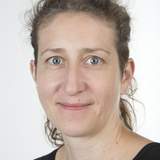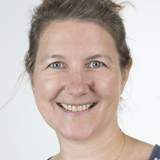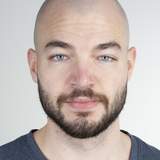Structural research is one of the most important analysis methods for the assessment of native, pathological, and regenerating tissue, and therefore constitutes an important basis for medical-biological research. At the Competence Center Morphology, we deal with the morphology of cells, tissue, and biomaterials in the framework of experimental and clinical projects to gain information on the structure and composition of the objects to be examined.
Morphology of Cells, Tissue and Biomaterials in Focus
The Core Facility Morphology is a cooperative laboratory of the University Clinic of Dentistry, the University Clinic for Trauma Surgery, and the Ludwig Boltzmann Institute for Traumatology - the Research Center in Cooperation with AUVA. It performs histological as well as electron microscopic reprocessing of hard and soft tissue and biomaterials.
Applied Methods
In addition to classic histochemical colourations for a differential representation of various tissue components in tissue sections, immunohistochemical reactions are regularly executed to specifically determine their matrix composition (e.g. collagen I, II, III, fibrin), soluble substances (e.g. BMPs, MMPs), cell components (e.g. mitochondria, vimentin), cellular activities (e.g. Ki67, caspase 3), as well as the cell types (CD31, CD68, CD45) of tissue samples.
Electron microscopy offers a structural representation in the high definition, ultrastructural range (e.g. collagen matrix, fibrin network, cell surfaces, material surfaces). With these methods, the development of tissue, the state, as well as the activity, of cells and the degradation of biomaterials can be displayed. Last year, projects in the areas of dental health, osteogenesis, vascularisation, neural innervation, cartilage regeneration and organ failure were supported.

Barbara Schädl
Head of Core Facility Morphology
T: +43 (0)1 40070-2632
E: barbara.schaedl@meduniwien.ac.at

Mag. Tamara Jagersberger
Technician
T: +43 (0)1 40070-2632
E: tamara.jagersberger@meduniwien.ac.at

Andreas Löscher, MSc
Technician
- Schneider C, Lehmann J, van Osch G PhD, Hildner F, Teuschl AH, Monforte X, Miosga D, Heimel P, Priglinger E, Redl H, Wolbank S, Nürnberger S. Systematic comparison of protocols for the preparation of human articular cartilage for use as scaffold material in cartilage tissue engineering. Tissue Eng Part C Methods. 2016 Nov 15. [Epub ahead of print]
- Nürnberger S,•Rentenberger C, Thiel K, Schädl B, Grunwald I, Ponomarev I, Marlovits St, Meyer Ch Barnewitz D. Giant crystals inside mitochondria of equine chondrocytes. Histochem Cell Biol DOI 10.1007/s00418-016-1516-6
- Teuschl A, Heimel P, Nürnberger S, van Griensven M, Redl H, Nau T. A Novel Silk Fiber–Based Scaffold for Regeneration of the Anterior Cruciate Ligament - Histological Results From a Study in Sheep Am J Sport Med Jun;44(6):1547-57. doi: 10.1177/0363546516631954. Epub 2016 Mar 8.
- Utomo L, Mieke M, Pleumeekers, Nimeskern L, Nürnberger S, Stok K, Hildner F, van Osch G. Preparation and characterization of a decellularized cartilage scaffold for ear cartilage reconstruction. Biomedical Materials 2015 10 (1) 015010
- Müller H-D, Cvikl B, Janji K, Nürnberger S, Moritz A, Gruber R, Agis H. Effects of Prolyl Hydroxylase Inhibitor L-mimosine on Dental Pulp in the Presence of Advanced Glycation End Products. J Endodontics. 2015 41 (11) p1852-61.
- Lindenmair A, Nürnberger S, Stadler G, Meinl A, Hackl C, Eibl J, Gabriel C, Hennerbichler S, Redl H, Wolbank S. Intact human amniotic membrane differentiated towards the chondrogenic lineage. Cell Tissue Bank. 2014 15 (2) p213-25
- Schlimp CJ, Solomon C, Keibl C, Zipperle J, Nürnberger S, Ohlinger W, Redl H, Schöchl H. Recovery of fibrinogen concentrate after intraosseous application is equivalent to the intravenous route in a porcine model of hemodilution. J Trauma Acute Care Surg. 2014 76 (5) p1235-42